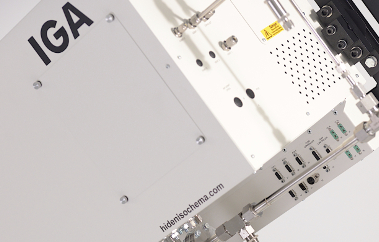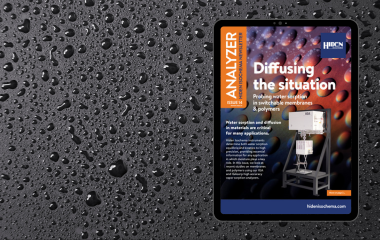In the Journal of the American Chemical Society, Stylianou et al have reported on the investigation of the structural transformation of a Zn-based flexible
NIST Adsorption Workshop Report
National Institute of Standards and Technology (NIST)
The final version of the summary report from the Measurement Needs in the Adsorption Sciences workshop, held at NIST last November, is now available and, for those of you interested in such measurement issues, it makes for very interesting reading.
Plenary Presentations
The report summarizes the following plenary presentations:
- Facility for Adsorbent Characterization and Testing (FACT) Laura Espinal, NIST
- The NIST/ARPA-E Database of Novel and Emerging Adsorbent Materials Daniel Siderius, NIST
- Quenched Solid Density Functional Theory of Adsorption for Heterogeneous Solids and Pore Structure Characterization Alex Neimark, Rutgers University
- Understanding Adsorption/Desorption Hysteresis for Fluids in Mesoporous Materials using Simple Molecular Models and Classical Density Functional Theory Peter Monson, University of Massachusetts-Amherst
- New IUPAC Recommendations: Physisorption of Gases, with Special Reference to the Evaluation of Surface Area and Pore Size Distribution Matthias Thommes, Quantachrome
- The Interplay between Experiment and Simulation for the Design of New Metal-Organic Frameworks Randall Snurr, Northwestern University
- Understanding the Stability of Metal-Organic Frameworks under Humid Conditions Krista Walton, Georgia Institute of Technology
- Characterization of Gas Shales for Enhanced Natural Gas Recovery and Carbon Storage Applications Jennifer Wilcox, Stanford University
- Two-Dimensional Zeolites for Separation Applications Michael Tsapatsis, University of Minnesota
- Frequency Response: A Powerful Technique for Discerning Gas Phase Diffusional Mechanisms and Rates in Nanoporous Adsorbents Jim Ritter, University of South Carolina
- Role of Thermodynamics in Adsorptive Gas Storage Applications Orhan Talu, Cleveland State University
Breakout Sessions
Then, over the course of the next three chapters, the report covers the discussions that took place in breakout sessions, which focused on three topics:
- Characterization
- Advanced Materials for Adsorption Applications
- Data Harmonization and Standards
And responded to the following focus questions:
- State of Art
- Challenges and Barriers
- Potential Pathways, Solutions, and Approaches
The breakout sessions resulted in lists of topics and issues that need to be addressed, in many areas of adsorption science, sorted into different priority tiers.
The top tiers, in no particular order, included the following points:
Research Needs for Characterization of Adsorptive Materials
- Identify complementary independent/multi-technique measurement techniques
- Develop techniques for measuring kinetics and diffusion
- Develop protocols and devices for rapid assessment of adsorbent performance (less time and high throughput)
- Develop in situ and in operando adsorption measurement techniques to characterize “working” adsorbents
Research Needs for Advanced Materials for Adsorption Applications
- Establish a standard naming scheme for MOFs
- Develop protocols and devices for mixture adsorption measurements and selectivity
- Reconcile experimental and simulation results for polar molecules and mixtures, especially water
- Improve understanding of chemoselectivity (how does surface chemistry influence competitive adsorption?)
- Transition from pellets, beads, and powders to defined structured adsorbents
Research Needs for Data Harmonization and Standards
- Encourage consistent, clear reporting of what is being measured/calculated (absolute vs. excess adsorption)
- Report data in a conventional manner
- Harmonize models and software within commercial apparatus
- Provide certified reference materials and data for validation for several material classes
- Set uniform activation/pre-treatment conditions
Further details can, of course, be found in the full report, which will be posted online on the Council for Chemical Research website.
In the meantime, if you would like a pdf copy, please do not hesitate to fill in our contact form and we will be happy to send it to you.
We’d also love to hear your comments on the report so please drop us an email, comment on our LinkedIn company page or Tweet us. We look forward to hearing from you.


